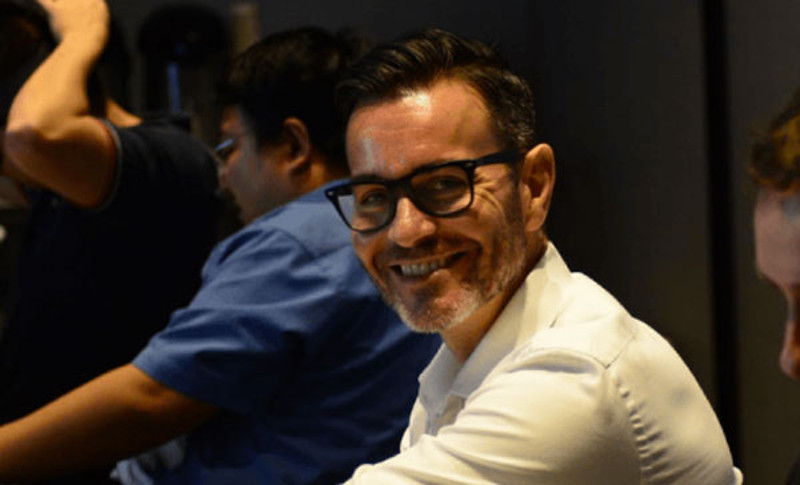Engineering alum Adrian Tout keeps pushing at the edges of computing
Author: UNB Alumni
Posted on Aug 18, 2023
Category: Inspiring Stories , Engineering , UNB Fredericton

As a kid, Adrian Tout (MScE’97) drove his parents crazy with his curiosity. Turns out, that’s a key driver for changing the world.
Adrian, now a product partnership lead at Google with 25 years of entrepreneurial and computing innovation under his belt, says curiosity is fundamental to constantly challenging the status quo and pushing the edges of what we know. “I’ve always been driven by learning and challenging things. It’s led me down the path of problem-solving and being on the forefront of huge paradigm shifts in computing.”
The Australian innovator graduated with a bachelor’s degree in survey engineering and computer science from Queensland University of Technology in Brisbane in 1994. He then worked for a couple of years surveying - which included working for an engineering firm and Australia’s largest miner, BHP.
“Whilst spending hours at the computer entering data captured from the field, I could see where all this mapping and information gathering was going. There was a clear shift happening in computing - both in terms of the data we were capturing and how it was being used - and I wanted to leverage that.”
During his search for the right master’s program, a post-grad student at Queensland, Tim Barker (MScE’91), who had studied at UNB under Dr. John McLaughlin (BScE’69, MScE’71), recommended UNB’s Geodesy and Geomatics engineering program.
“It was my first major trip away from Australia and as a 24-year-old who had never seen snow before, it was certainly an adventure. I remember arriving in December with no proper clothing for extremely cold weather. It was difficult since I didn’t know anyone, but UNB was a very welcoming place and it was a fantastic experience.”
Under the wings of Dr. McLaughlin and Dr. David Coleman (BScE’76, MScE’88), Adrian focused on the emerging technology of GIS (geographic information systems) integrated with GPS (global positioning systems). “It was the mid-90s and we were creating advanced spatial database systems. This was ground breaking stuff! Turns out, what we were developing with respect to GIS and GPS paved the way for future applications like Garmin and TomTom and even Google Maps.”
In 1997, Adrian returned to Australia, thanks to yet another UNB alum who recruited him to help build databases for government contracts. That soon led to being asked to lead the commercial effort at Australia’s first digital mapping business, WhereIS. “At the time, I joined a small entity that was looking to leverage GPS navigation systems. However, we needed to build a navigable database. Fast-forward about 10 years and we grew revenue from $0 to almost $100M. The business was extremely successful.”
Then Google came calling.
“We had essentially built the first version of Google Maps - putting map data online in the late 90s - however we didn’t even realize how big mapping was going to become. Our company licenced the navigable content to Google - and I was recruited to lead the Google Maps business for the Asia Pacific region. We grew revenue at triple digits and empowered new applications and industries. Digital maps were now ubiquitous.”
After taking a break to travel the world and then doing a stint with Australia’s largest IT firm to help companies migrate to cloud computing, he rejoined Google in California.
“I’m now having great fun with computer vision and Google's Lens and Augmented Reality (AR), with a specific focus on commerce. The potential for visual-based search with AR is huge. If we can perceive the world - then we can augment it. We are just starting to see some of the useful applications emerge, such as Google’s Live View, however it’s still early. Thinking about it, it’s not unlike where digital mapping was in the late 90s. In ten years and this form of computing will be pervasive.”
Adrian affirms that pushing the edges of computing take a certain type – tenacious, persistent and patient. “We’ve developed technology and pathways that have failed, but we always learn from it and often it leads to the next innovation. You never know how close you are, and you won’t always know if you’re on the right path. You have to remain curious, continue to ask quality questions, think critically and keep going. The early mindset is best served with a sense of what’s possible with experimentation - as you don’t know what’s ahead.”
“There’s something satisfying about fundamentally changing computing for billions of people. Things we’re trying to solve now will result in another meaningful paradigm shift – and figuring out those building blocks is both challenging and exciting. These are hard problems to solve.”
He also says that we need to be very deliberate and thoughtful with Artificial Intelligence (AI) efforts.
“We’re entering a phase that has the potential to go the wrong way. At Google, we have a huge responsibility. We still need to be bold, but do it thoughtfully. When we anchor ourselves in being useful and helpful, it’s a guardrail to being on the right path. The world will be a better place if we keep thinking critically and challenge what’s possible… however that comes with being responsible and making thoughtful decisions.”